Choosing the right colors can be overwhelming, especially knowing that you will be looking at your siding every day, and visitors and passersby will be viewing it as well. It’s definitely a long-term investment, so keep these pointers in mind:
1. Start by looking at the color of your roof.
A roof lasts anywhere from twenty to one hundred years, so it is a more permanent feature than siding color on your home. Thus, you should look for a color in the same color palette as your roof so they harmonize together. If your roof is dark, a lighter siding color often contrasts well, but a lighter and more neutral roof is complementary to a wider range of colors. Brown roofs usually pair best with warm colors, whereas gray and black roofs pair best with cool tones.
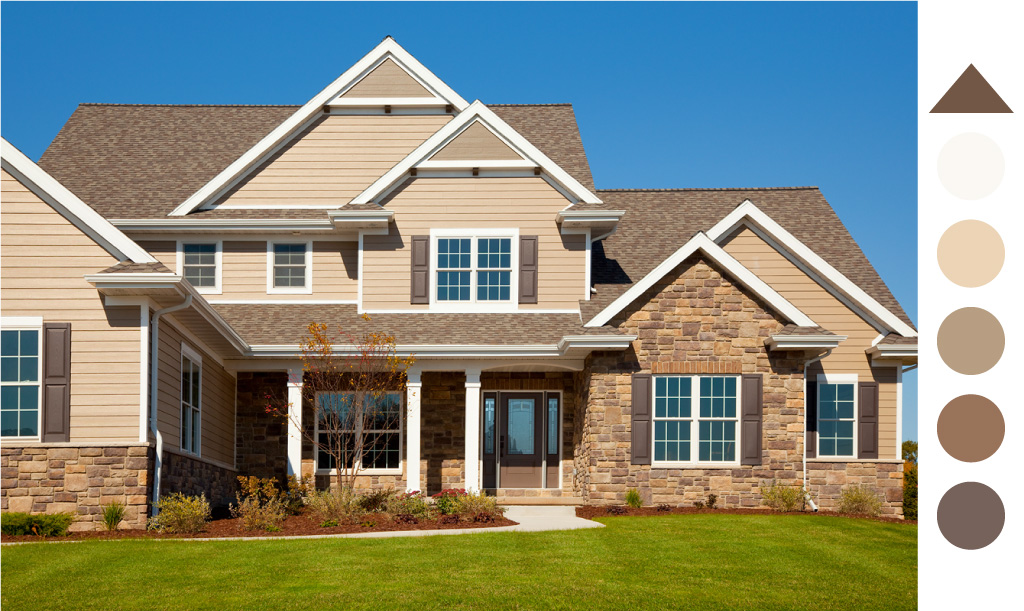
2. Take into account the style of your home.
The architectural style of your home may tend toward certain siding colors and away from others. Many older architectural style homes were built according to an original palette of colors. For example, Victorian homes were designed for muted dark colors and colonial homes for light and natural bright colors. If your home doesn’t have a traditional architectural style, paint it however you like! Either way, don’t be afraid to mix it up a little. Let your home’s style be a guide rather than a strict set of boundaries.
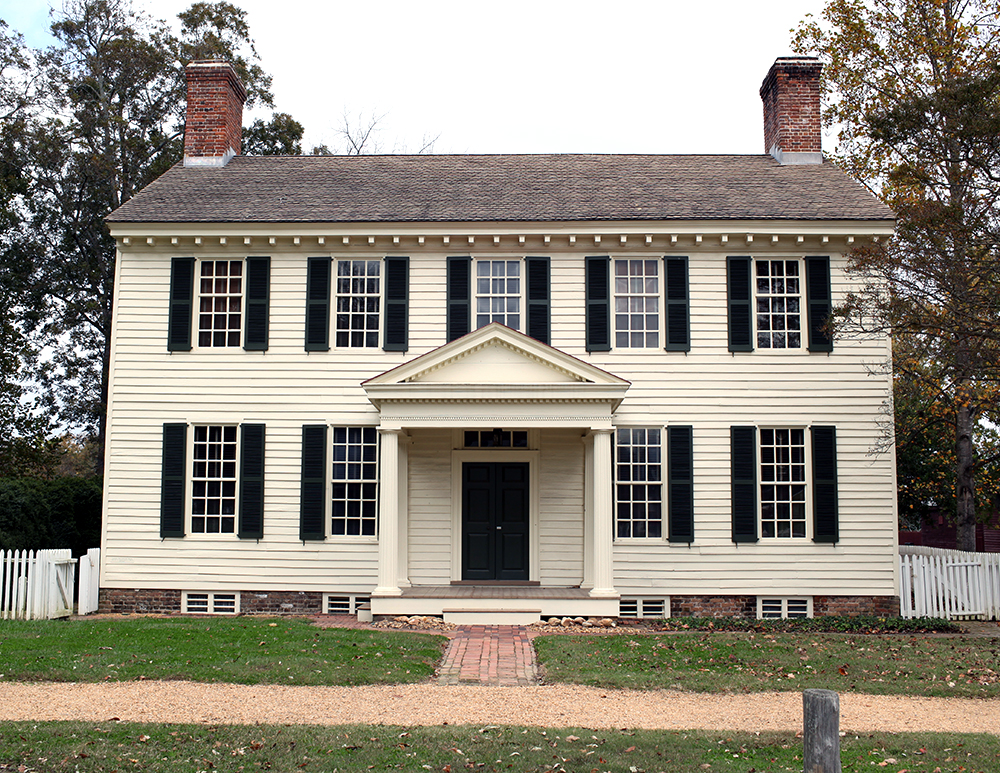
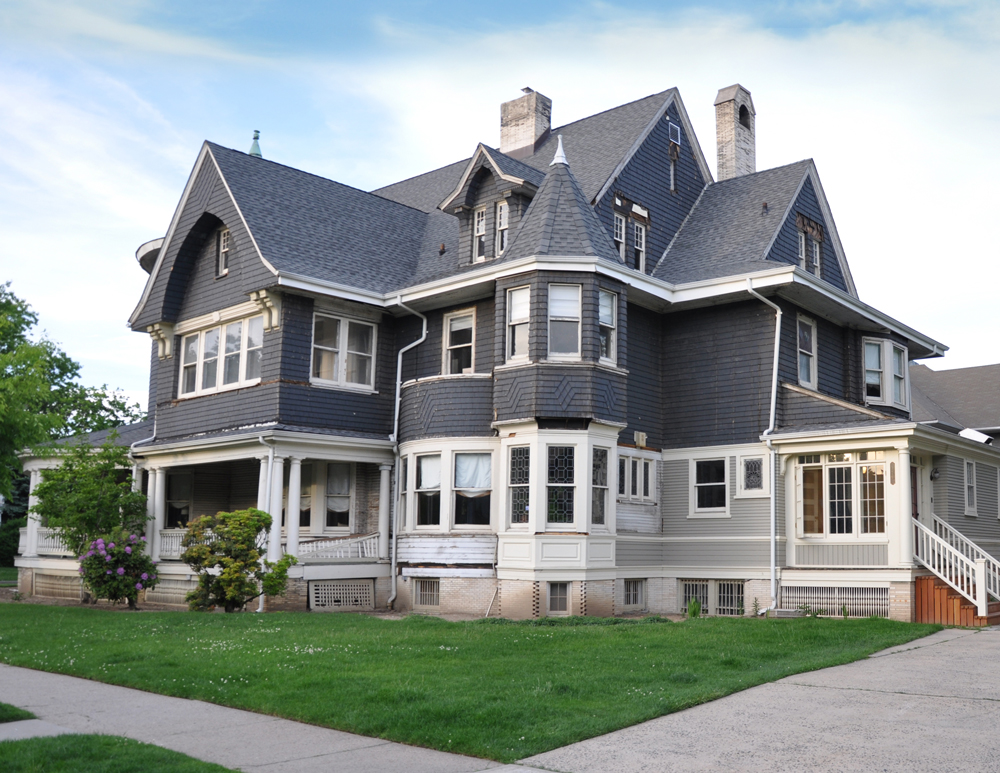 Also, note the other elements on your home’s exterior, such as those that are not painted, how much or how little detailing your trim has, and your shingle style. These are the other elements that can influence your choice of siding color.
Also, note the other elements on your home’s exterior, such as those that are not painted, how much or how little detailing your trim has, and your shingle style. These are the other elements that can influence your choice of siding color.
3. Keep in mind the size of your home.
Dark colors often look bold and ominous on a big home, but they can also make your home look set back and solid on its own. Light colors can make a small home appear bigger but also cause it to fade into the background. Think about features you want to emphasize or hide—lighter colors neutralize them, and darker colors make them stand out. Neutrals are subtle, and brighter colors draw attention.
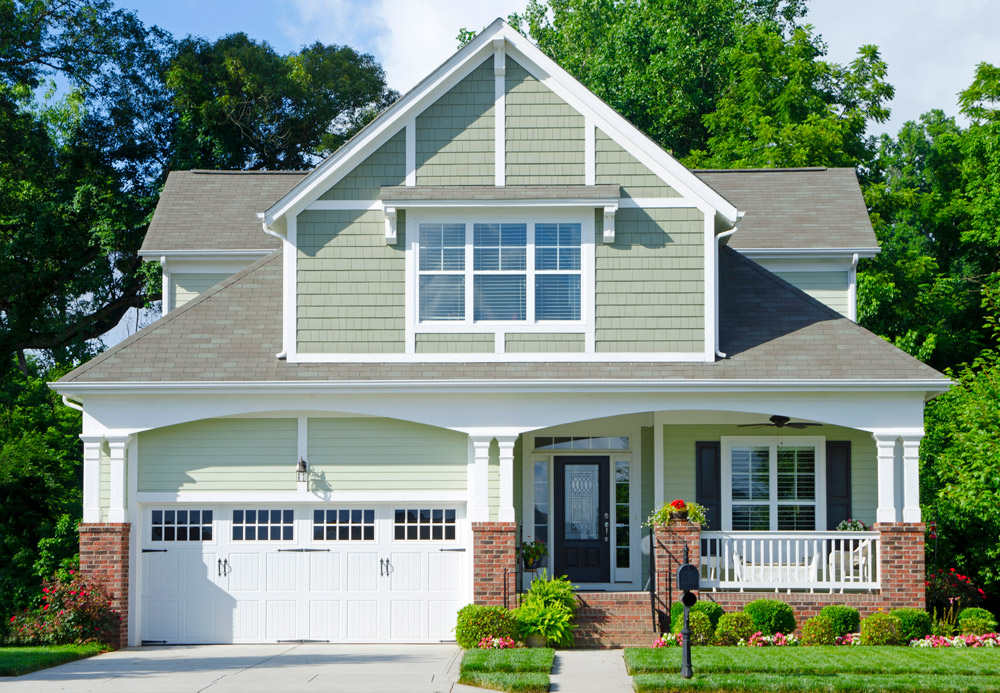
4. Acknowledge your landscaping style.
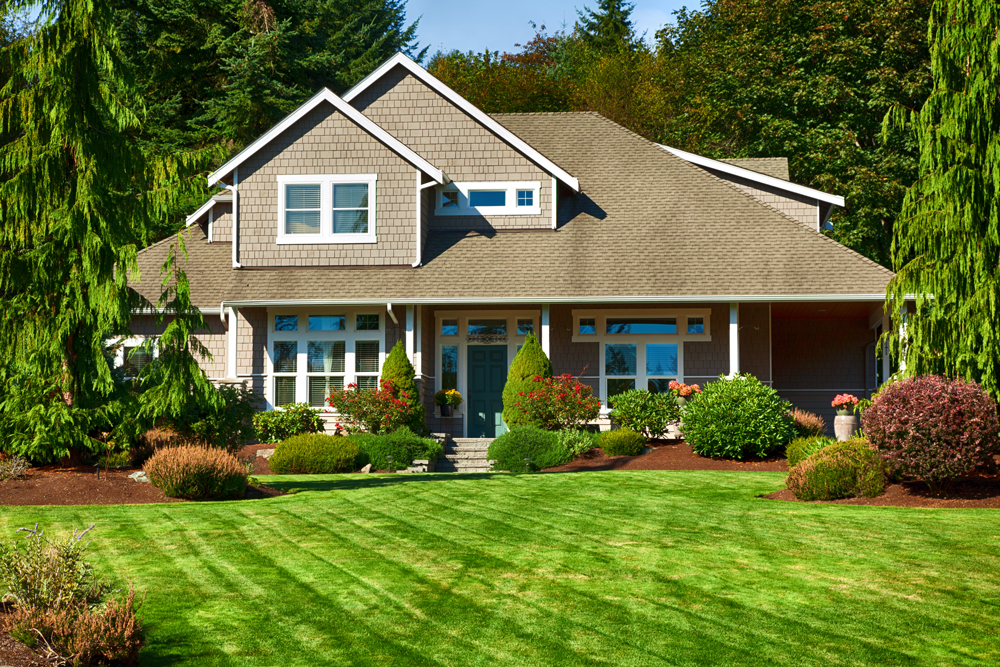
The style of your landscaping plays a role in what siding will look best on your home. If your landscaping is natural, bright, contemporary, understated, or another style, your siding should complement accordingly. For example, a home that is surrounded by woodlands may look strange with pastel siding but beautiful with earthy tones.
5. Survey your neighboring homes.
Note the color schemes and styles of your neighborhood, especially those closest to your house, so your house doesn’t stand out in a bad way. It’s good to add your personality to your house’s exterior, but you want your home to look good in its setting. Some neighborhoods obviously vary more than others, but clashes will be more noticeable for houses that are closer together, and there is more freedom to personalize if houses are spaced further apart.
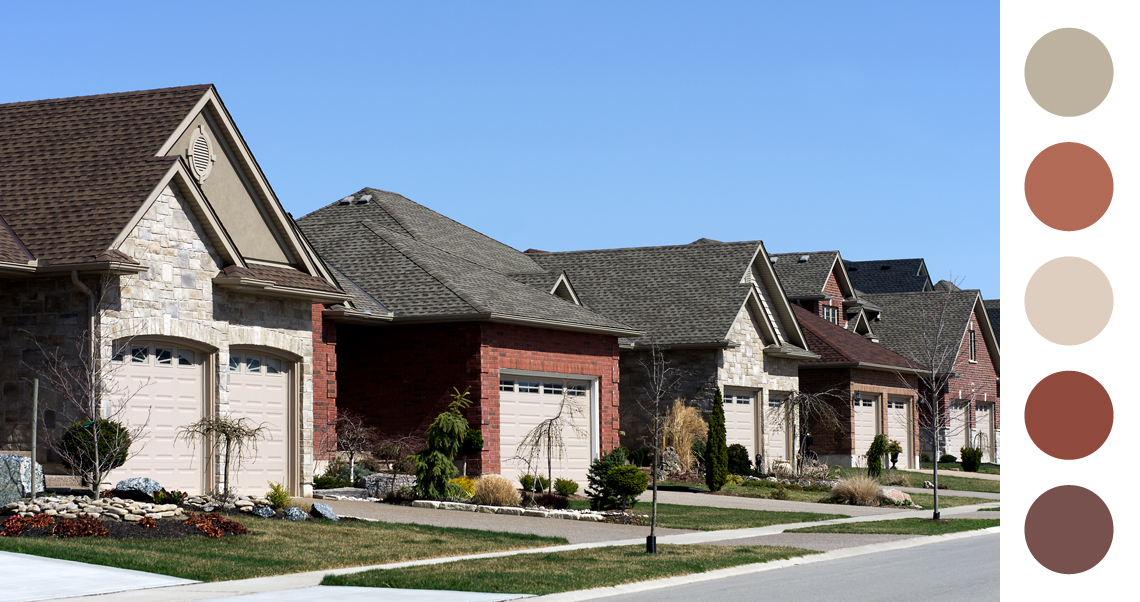
Stand out, but don’t clash, especially if you are planning on reselling your home; a house that sticks out like a sore thumb will have a lower resale value. An example of balancing uniqueness and uniformity is opting for a mid-tone color if your neighborhood’s houses are primarily white and you want dark-colored siding. Or if you want a fun pop of color without clashing, do it with accents such as your door, shutters, or windows. You can repaint a bold-colored accent more easily than you can repaint all your siding.
6. Look around you for color scheme inspirations.
You can search on Google or Pinterest, but the best way to find siding color inspiration is to drive around neighborhoods and notice what catches your eye. Pay extra attention to neighborhoods and architecturally styled homes that are similar to yours, and notice which colors you feel especially drawn to. Go with your gut, and use these colors as guidelines for choosing your paint.
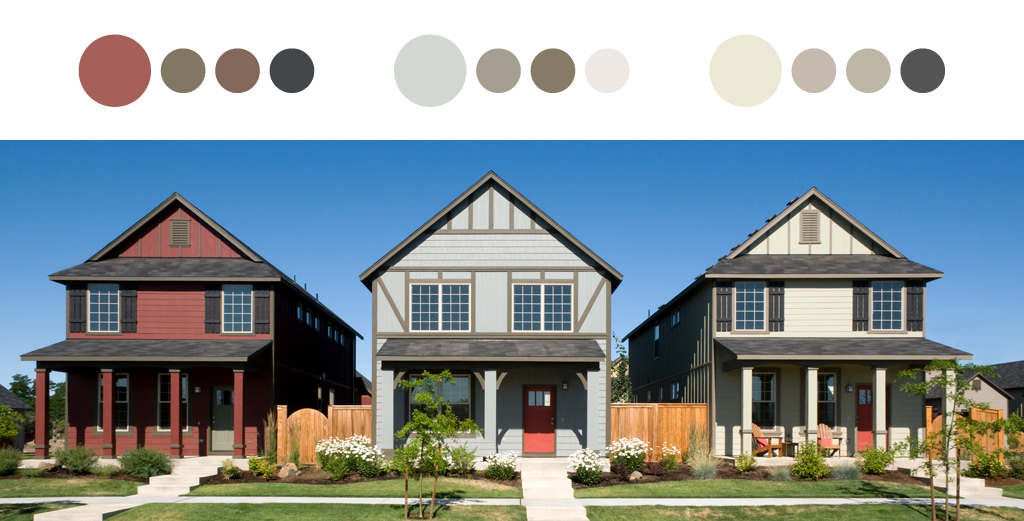
7. See how your color will hold out in your climate and at varying times of the day.
Some colors look best in bright, sunny settings, and some look best in darker, wintery settings. Bright shades in cold, gloomy areas can look misplaced, as can muted shades in areas of intense sunlight. Sunlight makes colors pop and brighten, so colors in sunlight will always appear lighter on your house than they appear on the paint swatch. It’s best to choose one shade darker than the paint swatch you like.
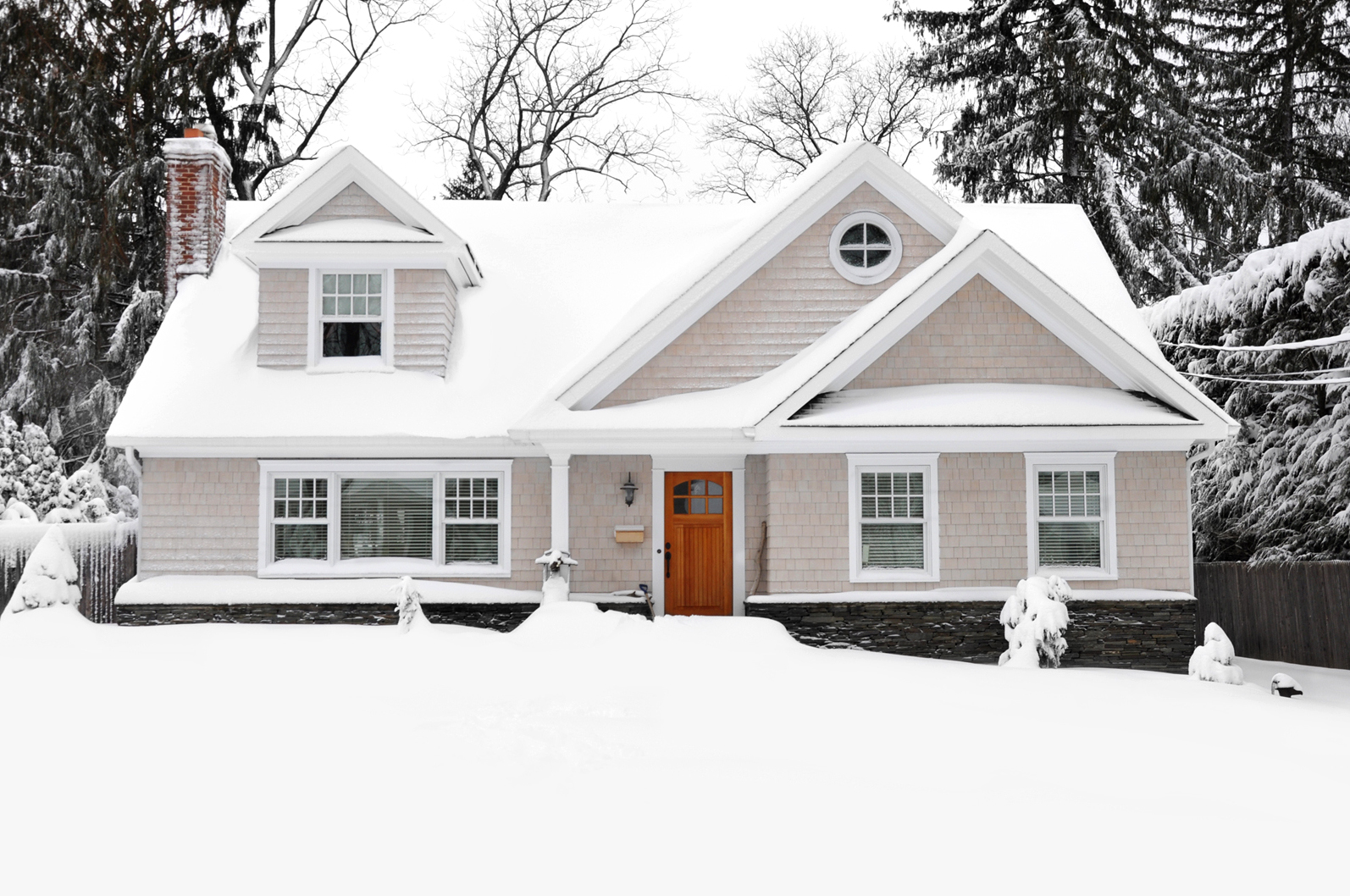
Test your potential colors by looking at how much or how little your paint swatch or sample shades vary throughout the day as the light changes. Look in the morning, afternoon, and night, and also test in the shade, intense sun, overcast weather, and other conditions.
8. Stay on top of the new color trends.
A home that uses current color trends is interesting and appealing, and the current color trends are all about the natural colors. Pantone Color Institute dominates the color charts and the world of fashion, art, and interior and exterior design, and its most popular colors right now are calm and muted greens, blues, and tans, venturing out into grays, browns, and natural brick reds.
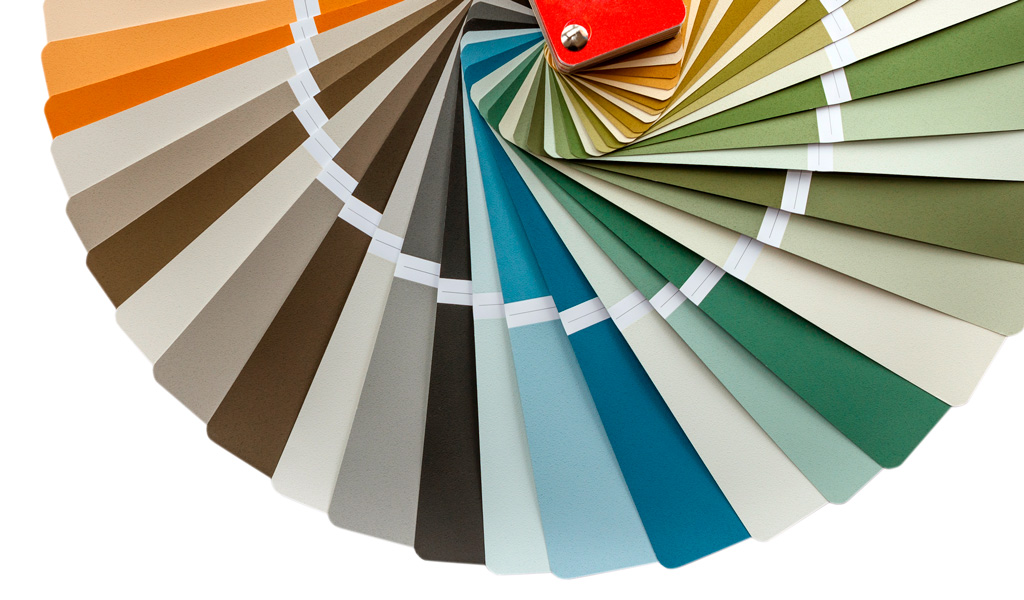 These colors provide a beautiful base and can be accented with a wide variety of colors. They also look great against any setting such as landscaping, the sky, and other natural elements.
These colors provide a beautiful base and can be accented with a wide variety of colors. They also look great against any setting such as landscaping, the sky, and other natural elements.
9. Find the best complementary colors for your house.
After you’ve picked your siding color, it’s time to pick your trim and accent colors. Along with your main siding color, you should select one or two more colors—one color for trim and, optionally, a second accent color for a door(s), shutters, decorative trim, and other elements. These complementary colors can help you have fun with your home and yet keep it looking trendy and appealing. Your trim and/or accent colors will look best and provide coordinating contrast if they are in the same color palette and either slightly lighter or darker than your main hue.
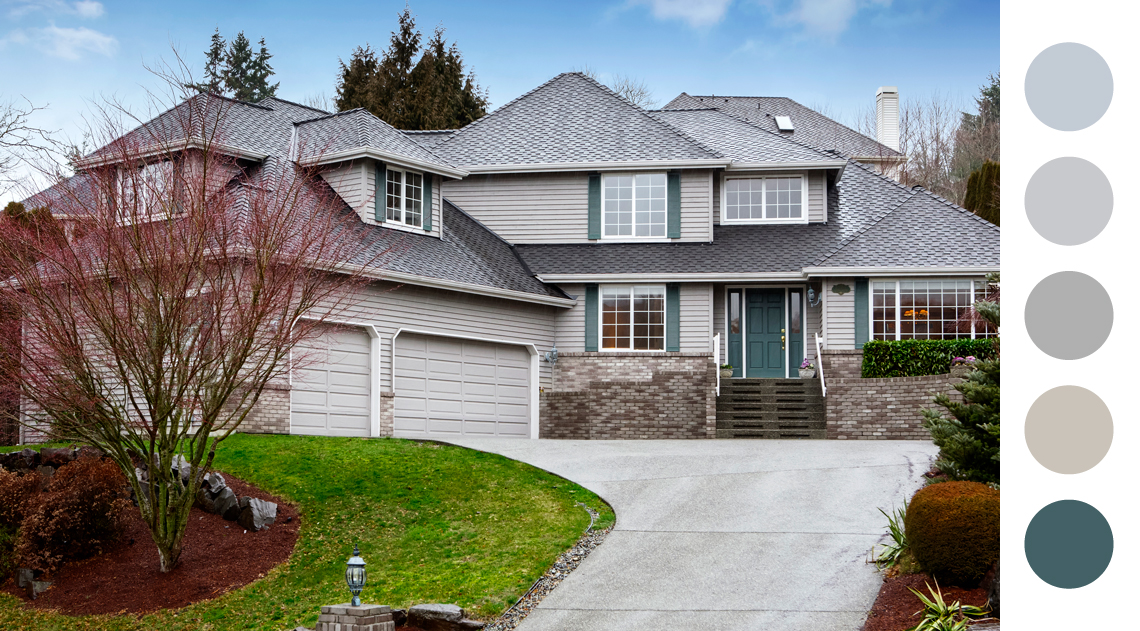
Think about the elements in your home. Which ones should remain unpainted, and which ones do you want to stand out if any? Don’t be afraid to branch out and paint your doors, shutters, or other elements a bolder color, such as a deep blue or green or even a muted purple, yellow, or brick red, in your color palette. Doing so will help your home have a pop of color and personality while staying true to the trending natural color palette.
The comforting thing about using current colors in exterior renovations is that the current trends tend to stay around for a while because of the relatively long-term commitment involved. These nine pointers may prove to be helpful to you in making your siding and color decisions.
10. Call Big Fish Contracting for a free, honest project assessment.
Big Fish Contracting has over fifteen years of experience in quality siding projects and is the leading full-service residential exterior renovation company in Milwaukee and Southern Wisconsin. For further assistance in choosing colors for siding, e-mail erik@bigfishcontracting.com or call (262) 470-1114 with any questions or comments or to request a free and honest project assessment.














